List of author's articles
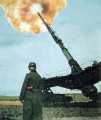
21-cm-K 12 (E) 21 cm railroad gun
During World War I, Europe's rail infrastructure enabled the development of rail artillery, which gradually evolved into a life-long weapon system capable of firing very heavy projectiles and causing enormous damage to the target area - and its deployment had a psychological impact on the civilian population.

22. Panzer-Division

25. Panzer-Division

3-cm-FlaK 103/38 Jaboschreck
The 3cm Flak 38/103 Jaboschreck was Germany's answer to Allied air supremacy. The 2cm Flak 38 was no longer of much use unless multiplied by four in a quad mount, and so Germany turned to Rheinmetall in 1944 to produce the 3cm Flak 38/103 based on MK 103 aircraft cannon that can be found in various German planes in FHSW. It only went into production in small numbers before the end of hostilities, but it was actually planned to use it in the Flakpanzer IV Kugelblitz, which never materialized.
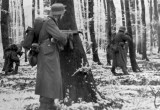
340. Volksgrenadier-Division
History, organizational structure and combat deployment of the People's Grenadier Divisions on the example of 340. Volksgrenadier-Division
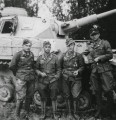
66th Special Purpose Tank Battalion
The history and combat deployment of a unit armed with looted Soviet tanks. The tank detachment was formed for the planned invasion of Malta and, after its withdrawal, sent to the Eastern Front.
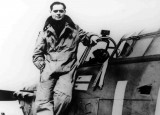
About one unusual friendship
(Request from RAF Lt. Col. Douglas Bader to Luftwaffe Lt. Col. Adolf Galland in August 1941)

AH-4
Chinese ultralight 155mm howitzer for mountain and airborne units and rapid reaction forces
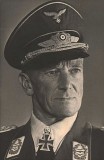
Airborne General Eugen Meindl

ArmaLite AR-10
ArmaLite AR-10 is a 7.62 × 51 mm NATO battle rifle developed in the 1950s by Eugene Stoner and manufactured by ArmaLite, then a division of Fairchild Aircraft Corporation. The AR-10 first appeared in 1956 and introduced an innovative direct barrel / stock design, phenolic composites and forged alloys, making it easier to control with automatic firing and weighing more than 1 lb (0.45 kg) less than other infantry rifles. that time.

Croatian Legion
Croatian volunteers - members of the Reinforced Croatian Infantry Regiment 369, also known as the Croatian Legion - supported Nazi Germany during the invasion of the Soviet Union. The war did not end for them in Stalingrad, at the instigation of the Soviets they formed the First Yugoslav Volunteer Brigade and fought again - this time against the Germans in the Balkans

Deployment of German small armored combat groups on the example of Panzer-Brigade 101
In response to Soviet successes during the initial phase of the Belarusian strategic offensive against Army Group Center (Operation Bagration), Hitler ordered on July 2, 1944, to build small, highly mobile armored combat groups capable of responding quickly and effectively to enemy breakthroughs. Here is the story of one of them.
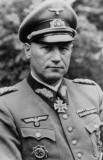
Edgar Feuchtinger
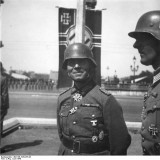
Erwin Rommel
Biography of the German field marshal, one of the most important field commanders of World War II.
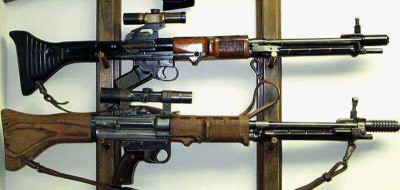
FG 42 - rifle for German paratroopers
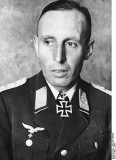
Friedrich August Freiherr von der Heydte
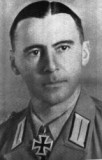
Fritz Bayerlein
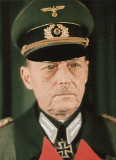
Gerd von Rundstedt

Götz von Berlichingen
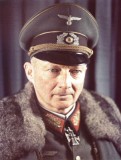
Günther von Kluge
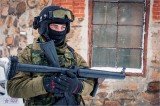
Hand-held grenade launcher RGS-50
Hand-held grenade launcher, developed at the instigation of the Soviet KGB, still serves the anti-terrorist police units of the Russian Federation and other post-Soviet republics.

Heavy Tank Regiment Bäke
A short, but successful history of the regiment (actually rather a battle group) on the Eastern Front in early 1944
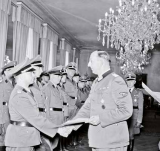
Heinz Pannwitz - Investigator of the assassination of Heydrich
Heinz Pannwitz is known to those interested in history primarily as the head of the Special Commission of Inquiry after the assassination of Heydrich. Less well known is his work in France, where as head of the Special Commission he tried to uncover the activities of the Soviet spy network, the Red Band. As a criminalist, Pannwitz preferred psychological coercion to brutal Gestapo methods. During his time in the Protectorate and in France, he tried to use arrested resistance fighters to play intelligence games with London and later with Moscow. There are uncertainties surrounding his alleged collaboration with Soviet military intelligence, the GRU.
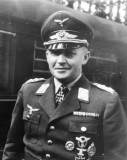
Hermann Bernhard Ramcke
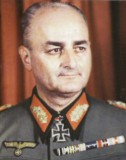
Infantry General Günther Blumentritt

Leo Geyr von Schweppenburg

LRDG - Long Range Desert Group
The Long Range Desert Group ( LRDG ), a British reconnaissance and raid unit operating in the North African Western Desert during World War II, can be considered the first modern special forces unit. In its missions, it inflicted more significant damage to Axis forces than other British conventional forces of the same strength, with minimal own losses.
Ludvík Svoboda
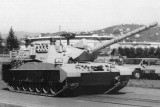
OF-40
The production of Leopard 1 tanks for the Italian army under a license purchased from the German company Krauss-Maffei GmbH enabled OTO Melara SpA to gain experience in the production of modern tanks. After the end of production, the production lines remained unused and the company's management decided to enter the market with a main battle tank of its own design (at first glance inspired by Leopard) intended for export to the Middle East.

Operation Elbrus (August 1942)
The ascent to the highest mountain of the Caucasus, Elbrus, undertaken by German mountain hunters during the summer offensive on the southern front in 1942, had no military significance. However, they would not be mountain hunters if they resisted the temptation to fly the imperial flag to the highest point where a German soldier could get during World War II. Hitler was so enraged at the climb to "that idiotic peak" that in a fit of rage he demanded a court-martial for "the crazy climbers". Of course, it didn't go that far.
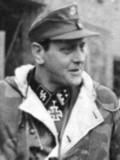
Operation Greif (Ardennes 1944)

Operation Leopard, Kolwezi 1978

Panzer Brigade 101
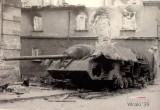
Panzer-Brigade 103
In July 1944, on Hitler's direct order, 10 tank brigades numbered 101 to 110 were formed to hold back the Soviet advance into the Reich. These highly mobile units were able to respond quickly and effectively to local breakthroughs at the front, but they did not reverse the unfavorable strategic situation. Most of them were disbanded during the winter and incorporated into panzer divisions. Tank Brigade 103 was not deployed until March 1945.
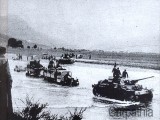
Panzer-Division Tatra
The Tatra Tank Division successfully participated in counterinsurgency and counterguerrilla operations in Slovakia, but had no chance against the Red Army
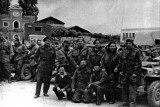
Popski's private army
The British Army has never had much sympathy for unconventional personalities. However, after the outbreak of fighting in North Africa, its leadership quickly realised the value of eccentric individuals who knew the Western Desert and could survive in its inhospitable wastelands. It therefore enabled and encouraged the formation of such legendary unconventional units as the SAS and the Long Range Desert Group (LRDG). Then, from December 1942, another irregular unit operated in North Africa (and later Italy) - Popski's Private Army, the smallest British unit under independent command.
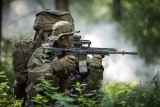
Rheinmetall-Steyr RS-556 assault rifle
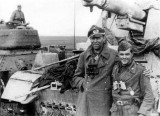
schwere Heeres-Panzerjäger-Abteilung 93
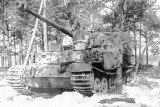
schwere Heeres-Panzerjäger-Kompanie 614
The fate of a unit armed with heavy Elefant tank destroyers is an eloquent testimony to the agony of the Great German Empire in the early spring of the last war year.
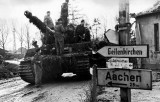
schwere Panzer-Kompanie Hummel
History and combat deployment of forces armed with heavy Tiger tanks from September 1944 to April 1945
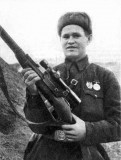
Sniper Vasily Zaitsev: how a legend is created
The sniper Vasily Zaitsev, an icon of the Great Patriotic War, is sometimes considered a mere product of Soviet propaganda. Like anyone who successfully fought in the Stalingrad inferno, Zaitsev deserves respect and admiration. It was the politruks and propagandists who politically exploited his name and fighting prowess. Half-truths and outright fabrications about Vasily Zaitsev have taken on a life of their own, and individual authors of historical and fiction publications have taken them over and copied them from each other. The crown of all this was put on by Annaud's film "The Enemy at the Gates". The name Vasily Zaitsev has thus become synonymous with the term "Soviet sniper", although there were dozens of Soviet snipers with more successful hits during World War II.
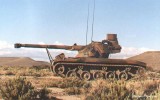
Steyr SK-105 Kürassier
The SK-105 Kürassier is an Austrian light tank armed with a rifled 105 mm gun in an oscillating turret. It is estimated that over 700 have been produced, with initial deliveries in 1971. It shares its CN 105-57 main gun with the French AMX-13, which was widely produced and deployed.
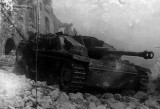
Sturmgeschütz-Abteilung 242

Successes and defeats of military intelligence: Crete
Operation Mercury, the German invasion of Crete in May 1941, deprived Britain of a valuable foothold in the Mediterranean. However, the Germans won at the cost of unacceptable losses. The course of the fighting in Crete was significantly affected by the failure of the intelligence services of both warring parties. While the German attackers set out to fight with terribly inaccurate ideas about the targets, the defenders of Crete had enough accurate information, but due to their poor evaluation, they put all their efforts in the wrong direction.

Successes and defeats of military intelligence: France 1940
The speed with which Nazi Germany defeated France in 1940 shocked the world. The Wehrmacht defeated the French army, which had been considered the most respected military force in Europe for twenty years, in less than seven weeks. The reason for the German victory (and the French defeat) were mainly differences in the military doctrine of the two countries, the operational art of the command corps and the level of training of their troops. The result of the war was also due to the different approach of the French and German armies to the collection of intelligence and, in particular, to its evaluation and use.

Successes and defeats of military intelligence: Introduction
John Churchill, Duke of Marlborough (1650-1722)
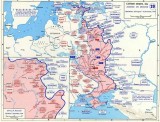
Successes and defeats of military intelligence: Moscow 1941
The collapse of Operation Typhoon - the German attempt to conquer Moscow - marked the definitive end of the blitzkrieg on the Eastern Front. The Blitzkrieg turned into a war of wear and tear - and Nazi Germany did not have enough human or material resources for it. The initial success of the German winter offensive was made possible by the failure of Soviet military intelligence, which did not anticipate an attack on Moscow at this time of year and was unable to detect German preparations. The Abwehr's traditional underestimation of Red Army power was one of the main causes of the defeat of the Central Army Group, which, thanks to Hitler's ban on retreating, did not end in utter disaster.
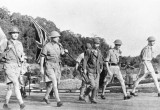
Successes and defeats of military intelligence: Singapore 1942
The fall of Singapore, also known as the Battle of Singapore, took place in the South–East Asian threatre of the Pacific War, when the Empire of Japan captured the British stronghold of Singapore — nicknamed the "Gibraltar of the East" — with fighting in Singapore lasting from 8 to 15 February 1942. Singapore was the foremost British military base and economic port in South–East Asia and was the key to British interwar defence planning for the region. The capture of Singapore resulted in the largest British surrender in history.

Successes and defeats of military intelligence: the North African battlefield
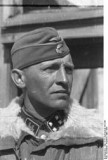
Sylvester Stadler

T-42 (project of super-heavy tank)
The T-42 was a project of Ing. Grotte from 1932, based on the TG-VI project. This colossus, weighing about 100 tons, about 15 m long and protected by armor up to 70 mm thick, was to be powered by a Grott designed engine of 2000 HP (speed up to 30 km/h) or two AM-34 engines of 800 HP (speed 18 km/h).

The Americans at Kasserine Pass: a debacle or a useful lesson?
The fighting for the Kasserine Pass in February 1943 between inexperienced American troops and seasoned German veterans is often portrayed, especially by American historians, as a catastrophic defeat. In reality, however, the Americans were able to quickly reclaim the lost territory. Even more valuable was the acquisition of valuable combat experience for future African and especially European campaigns.
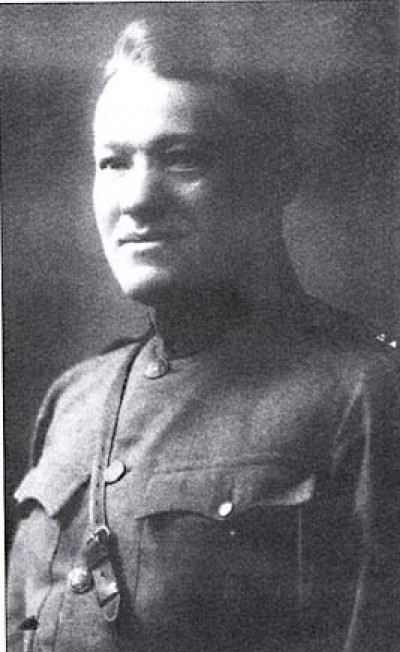
The first Czech spy Emanuel Voska
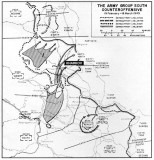
Third Battle of Kharkov
Kharkov. Ukraine's second largest city, an industrial center and a major transport hub. During World War II, it became four times the site of heavy fighting between German and Soviet troops. In October 1941, it was conquered by the German 6th Army. The Soviet attempt to conquer the city in May 1942 was repulsed by the Germans. Less than a year later, in the early spring of 1943, the Red Army gained Kharkov and soon lost it again. During this, the third battle of Kharkov, the 1st Czechoslovak Field Battalion underwent its combat baptism. The city definitely passed into Soviet hands in August 1943.
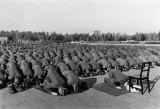
Waffen SS Muslim Divisions
Heinrich Himmler's ambition to create the largest possible private conscription force brought a large number of foreign troops into the ranks of the Waffen SS. Among the most bizarre of these were certainly the Muslim divisions. The Bosnian and Kosovar Muslim volunteers did not excel in morale or fighting qualities. But in the short time they were deployed, especially in the anti-Partisan fighting in the Balkans, they earned a reputation as the most brutal of war criminals. The Muslim divisions of the SS Arms eventually disappeared due to massive desertions rather than combat losses.
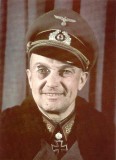
Walter Model
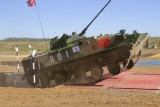
ZBD-03
The Chinese airborne combat vehicle, inspired by the Russian BMD-3, lags behind its design in terms of quality.
Join us
We believe that there are people with different interests and experiences who could contribute their knowledge and ideas. If you love military history and have experience in historical research, writing articles, editing text, moderating, creating images, graphics or videos, or simply have a desire to contribute to our unique system, you can join us and help us create content that will be interesting and beneficial to other readers.
Find out more